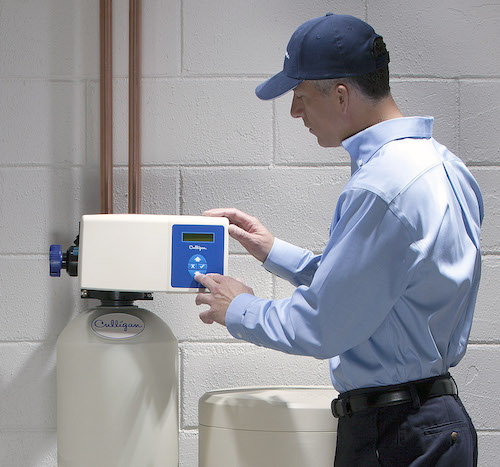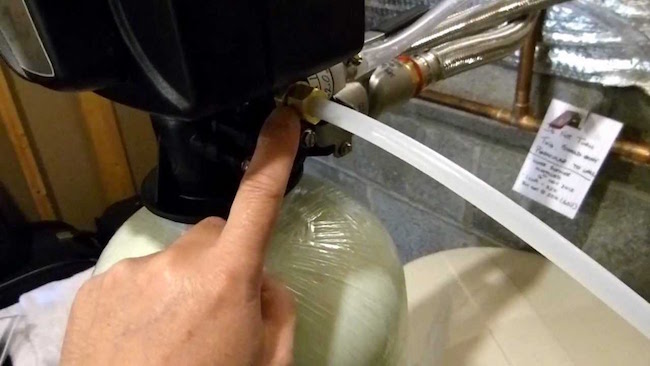We will provide the steps for Water Softener Maintenance – Different Ways, and also discuss various aspects related to it. If you are living in an area with hard water, then buying one softener is recommended for you.
If the continuous use of hard water is done, then you will notice limescale buildup on pipes and other water softener systems. Also, the clothes start fading, and also white patches are found on the kitchen utensils.
The modern water softener works efficiently and lasts long only if proper maintenance is provided to it. You need to conduct regular checks for extending the lifespan of the unit. Let’s get into the steps which are to be performed for a maintenance check.
Water Softener Maintenance
There are three divisions present in the Maintenance process for Water Softeners. And within each division, you have got the steps to perform. The primary task divisions are:
- Working on the Brine Tank
- Clean the Brine Tank
- Additional Care
Let’s begin with the first phase of Brine Tank Check. Following are the points which are to be followed while dealing with a brine tank:
I. The level of the salt is checked in the brine tank, once in a month. Salt is an essential thing in the process of water softening, as it is the only thing responsible for softening.
And regeneration helps in preparing the resin beads to handle the hard water more efficiently. The salt solution is present in the Brine Tank, for the restoration process, and there is a pre-determined level of the salt in it.
For this, you can refer the water softener manual to know the level of salt allowed for the Brine Tank. It is required to fill the tank with at least half of it with salt. Also, make sure you fill the salt such that it is 3 inches above the water level.
You can increase the amount of salt in the brine tank since it increases the efficiency. But try to reduce the salt, if you find old salt starting to cling to the side walls of the tank.
Read | What Water Softener Salt Is Best To Use?
II. Next, you need to know the type of salt which is best for your water softener. The water softener system mentions the type of salt suitable for it, like granular, pellet, etc. The granular one is the most preferred one since it dissolved in the water easily. It is recommended to go wit the pellet type, as this helps in reducing the clogging issues.
III. Break down the salt bridge if any present. This creates the problem like salt not getting dissolved properly which results in low performance of the water softener. You can make use of a broom, and mix the bottom area of the tank, to break the salt bridges if any.
IV. Check for any mushy structure of salt formed at the bottom part of the tank. You can make use of a broom for handling this issue too. Remove if any present.
Other reads: Northstar Water Softener Reviews – Top Picks 2018
Next task division is Clean the Brine Tank. And the steps include in this are:
I. The major advantage with the current water softener is that they can go without cleaning for many years. So if you notice some difference in the water softener system, then it is the signal for cleaning the tank. Schedule one day for performing the cleaning process.
II. Next step is to empty the tank. For this, first, you need to stop the water intake. Now follow the siphon method or just remove all the water from the tank. Here you have to remove the salt contents too, if any present.
Check this useful source for Waterboss Water Softener reviews.
Don’t dispose the water to the garden, as the salt from the water softener can damage the plants badly. It is better to dissolve the salts in hot water.
III. There is a brine grid in the tank. You need to take this grid out in this step. Some water softener systems have got a platform like structure in the brine tank. You have to put this aside for a while for cleaning the tank.
IV. Take 1 or 2 gallons of water, and mix the considerate amount of soap into it. Pour this solution in the tank, and then using a scrub rub the interior of the tank. It is recommended to use a long-handled brush for this purpose.
V. Wash and rinse the tank with plain water. Then you can use bleach to sanitize the tank. Add 60ml of bleach and water (2-3 gallons), and keep stirring for 15 minutes.
VI. The final step is to rinse the water softener system again. Place the grid back, if there was any in the tank. And, finally, refill with salt water solution within it.
Check our review: Fleck 5600sxt 48000 Digital Metered Water Softener
Here ends the second task division. Keep in mind that following regular Water Softener Maintenance is necessary for long life on your product.
GE is yet another popular brand in the softeners, so you can take a look on their Top Picks too. [reference]
Some additional steps which can be performed for complete water softener maintenance. They are explained in the following section:
I. Work with the valves on the water softener. The bypass valve is similar to the rod in structure, and they are used for blocking water flow. Try to twist the pipe for intake and outtake valve for stopping the working of them. Then place the pipes in their old position, and continue with the work.
II. Make use of water softener cleaner. Using this, you can flush the brine tank once in a few months. Follow the instructions that are given on the softener cleaner solution. In the end, you will be able to use the resin completely, and in the right way.
III. Clean the valve between the resin and brine tank in a water softener. When you wish to add water to the regeneration chamber, the nozzle, and the Venturi Assembly comes into action. These settings help in making a suction system.
You need to disassemble the parts, and clean them at least twice in a year. This has to be performed when the brine tank gets clogged. You can follow the instructions which are provided in the manual. Make sure that all the water pressure within the water softener is removed before disassembling. Otherwise, it may cause damage to the unit.
You can have a peek at this article to get a deeper knowledge on Water Softener parts.
IV. This point is for those, who have tried out each way explained above still getting hard water. Try to perform some other troubleshooting techniques. And they are:
- Check that the bypass valve is not closed with the regeneration time set on it.
- If the water usage has increased or you find the hardness has increased, then perform regeneration process.
- If the digital display is not working properly, then check for the power supply. Also, check if the wires are intact in the water softener.
- The final way is to hire some expert to examine the machine for you.
So these are the steps of water softener maintenance that you can perform on your own if you wish to troubleshoot the water softener system by yourself. We believe that you have understood each division listed here, and all the processes which are included in each division.
You can find out my review here for the NuvoH2O Water Softener systems.
We hope that this article on Water Softener Maintenance – Different Ways assisted you in the right way. If you have got any question regarding the steps explained here, feel free to post them in the comment section provided. For more updates visit here!